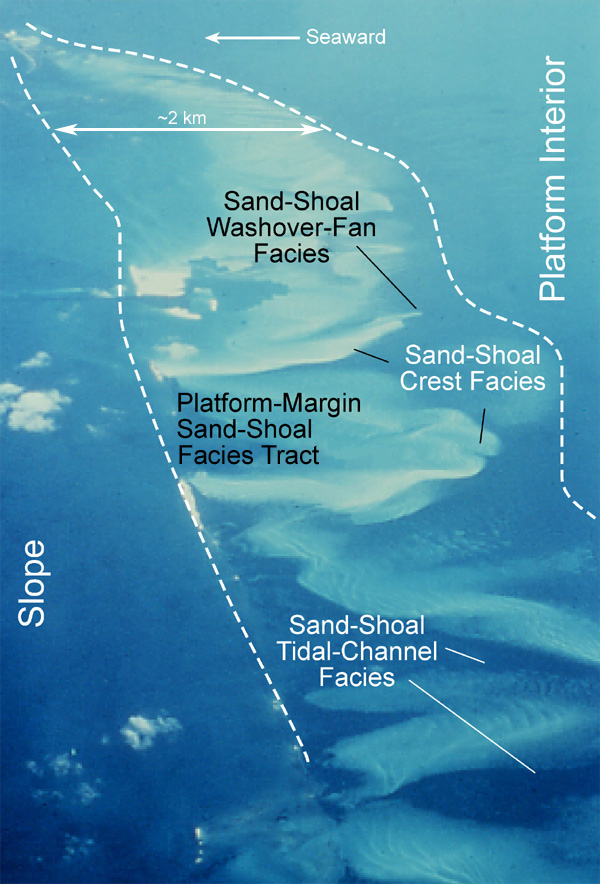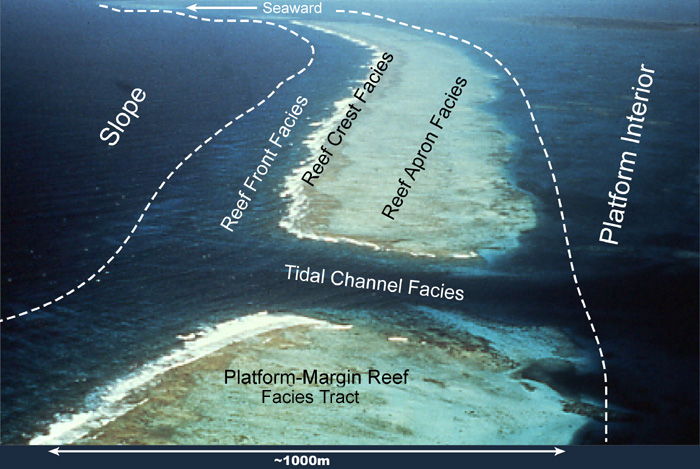
Introduction to Carbonate Environments, Facies, and Facies Tracts
Robert G. Loucks, Charles Kerans, and Xavier Janson
Bureau of Economic Geology
| Design Objectives |
| Credits |
| Back |
| Top |
| Exit |
 |
 |
 |
| CONCEPT OF FACIES TRACT
A facies tract is a genetically linked association of lithofacies
and vertical lithofacies successions that records a discrete energy/water
depth/sediment supply setting (Kerans and Fitchen, 1995). Kerans
and Fitchen (1995) stated that “because the facies tract
represents a distinct energy regime/water depth/sediment supply,
it must be defined through interpretation of depositional processes
rather than lithologic parameters such as grain types." Therefore,
a facies tract can be characterized by a variety of lithofacies. |
| Examples of facies tracts: |
EXAMPLE 1. A platform-margin sand-shoal facies tract is composed of several main facies:
|
 |
Cat
Cay platform-margin sand-shoal complex along the west margin of
the Great Bahama Bank. Dashed
lines group an assemblage of facies into a facies tract. |
EXAMPLE 2. A platform-margin reef facies tract is composed of several main facies:
|
 |
A
well-developed platform-margin barrier reef offshore of southern
Belize. Dashed lines group an assemblage of facies into a facies
tract. |